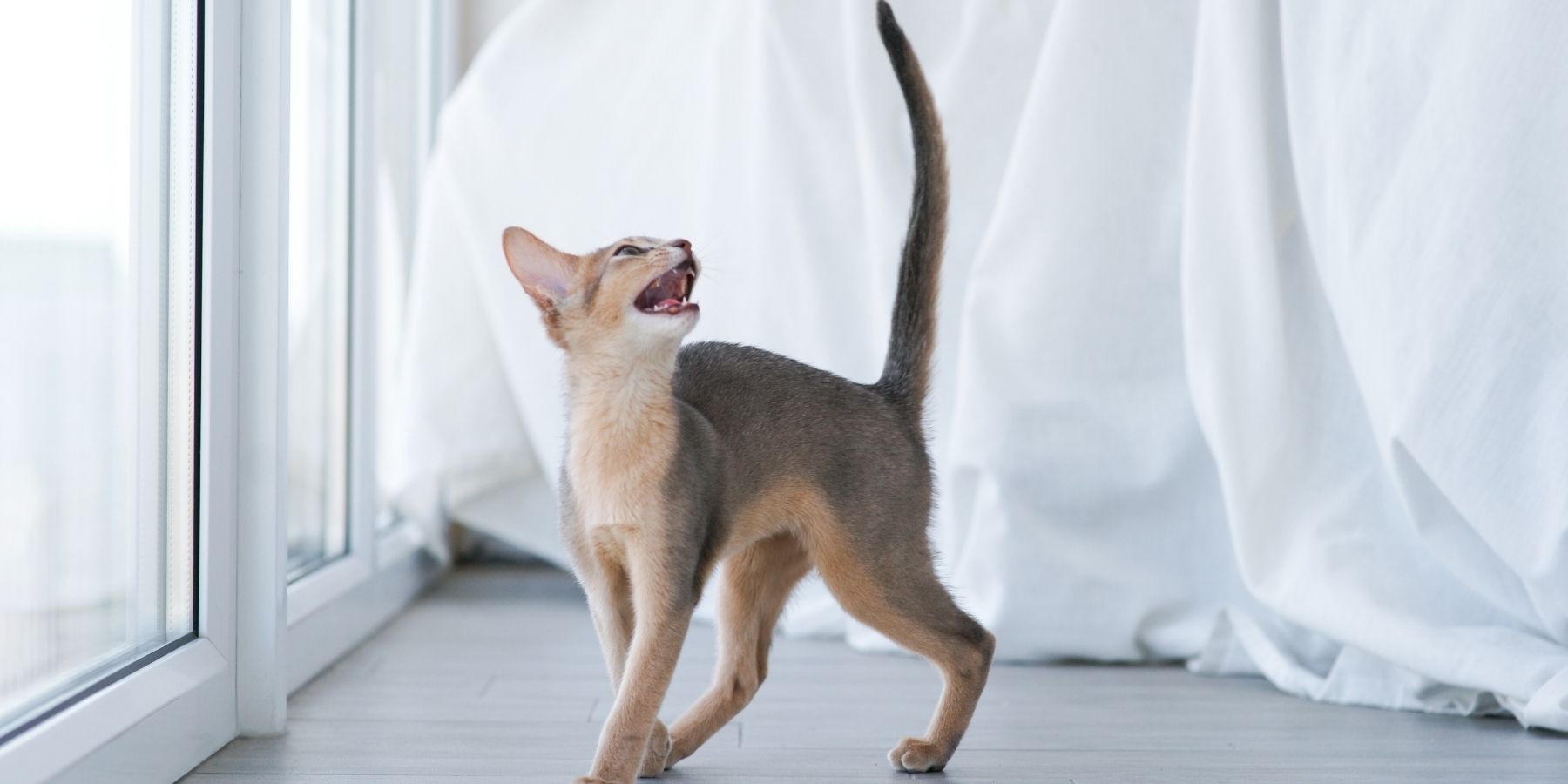Cats communicate in various ways, and their sounds are an integral part of how they express themselves. Understanding these sounds can help cat owners better understand their feline friends.
This article will explore the most common cat sounds and what they typically mean.
1. Meowing
Cat Meowing is the most well-known cat sound and is used primarily to communicate with humans, not other cats. The meanings can vary greatly:
Short Meow: A standard greeting or a way of saying hello.
Multiple Meows: Excitement, especially when you’ve been away for a while.
Mid-Pitch Meow: A plea for something, like food or attention.
Drawn-Out Meow: A demand, such as wanting to be let outside.
Low-Pitch Meow: A complaint or indication of displeasure.
High-Pitch Meow: Pain or anger.
2. Purring
Purring is one of the most comforting cat sounds, often associated with contentment and relaxation. However, purring can also mean:
Contentment: When your cat is relaxed or enjoying being petted.
Healing: Cats sometimes purr when recovering from an injury, as purring is believed to promote healing.
Stress or Pain: Surprisingly, cats may also purr when they’re stressed or in pain.
3. Chirping or Chattering
This sound is often made when a cat is watching birds or squirrels from a window. It’s thought to be:
Frustration: Expressing frustration at not being able to catch the prey.
Excitement: The thrill of the hunt or seeing potential prey.
Imitation: Some theorize it’s an attempt to imitate bird calls.
4. Hissing
Hissing is a defensive sound. It means:
Fear or Threat: When a cat feels threatened or is scared.
Aggression: A warning to back off or a precursor to a fight.
5. Growling or Snarling
These sounds are similar to hissing and also indicate aggression or fear. They mean:
Anger: A serious warning sign that a cat is very unhappy.
Fear: When a cat feels cornered or in danger.
Distress: Sometimes, growling can indicate discomfort or pain.
6. Yowling
Yowling or loud, drawn-out meows are different from typical meows. This sound often indicates:
Discomfort: The cat may be in pain or discomfort.
Mating Call: In unspayed females or unneutered males, it can be a mating call.
Territorial Presence: Marking their territory or responding to another cat.
7. Trilling
Trilling is a sound made when a cat’s mouth is closed. It’s a friendly, chirpy sound, meaning:
Greetings: Often used by a mother cat to call her kittens.
Affection: A sign of affection or a friendly greeting to humans.
8. Murmuring
Murmuring sounds include soft trills, coos, and chirps. These sounds typically indicate:
Contentment: When a cat is pleased.
Requesting Something: Such as wanting to be petted or fed.
9. Squeaking
A less common sound, squeaking can be similar to meowing but softer. It means:
Attention Seeking: Often used to attract attention or express curiosity.
Tips for Responding to Cat Sounds
Observe the Context: Pay attention to the situation in which your cat is making the sound.
Respond Calmly: Always approach and calmly respond to your cat.
Never Punish: Do not punish your cat for making noise, as this can lead to stress and behavior issues.
Consult a Vet: If your cat’s vocalizations change suddenly or if they seem to be in pain, consult a veterinarian.
Conclusion
Understanding cat sounds is a crucial part of cat ownership. Each cat is unique, and their sounds can have personal variations. By paying attention to these sounds and the context in which they are made, you can deepen your bond with your cat and ensure their well-being.
